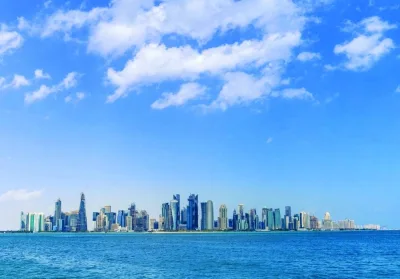In the near term, growth prospects for the Qatari economy and the Qatari market are expected to remain good because of the near-term infrastructure project pipeline, expansionary budget announcements, moderate corporate earnings growth and an attractive dividend yield, the Qatar Investment Fund report said.
By Pratap John/Chief Business Reporter
The long term prospects for the Qatari economy “remain compelling” because of “massive” infrastructure spending totalling $182bn up to 2018 and “favourable” demographics, a new report has shown.
“GDP growth from an expanding non-hydrocarbon sector and rising population should drive consumption spending, creating opportunities in financial services, transport, communications, and real estate,” Qatar Investment Fund said in a quarterly report.
The banking sector should benefit from demand for project financing and consumer lending, it said. “Hence, the investment adviser favours selected domestic banks, real estate and consumer driven companies,” QIF said.
In the near term, growth prospects for the Qatari economy and the Qatari market are expected to remain good because of the near term infrastructure project pipeline, expansionary budget announcements, moderate corporate earnings growth and an attractive dividend yield, the report said.
In its macroeconomic update, QIF said Qatar’s economy continues to grow, with GDP increasing 5.7% in Q2, 2014 compared to Q2, 2013, quoting data from the Qatar Statistics Authority (QSA).
In Q2, 2014, GDP accelerated from a downwardly revised 5.4% in the previous quarter. Q2 growth was mainly driven by double-digit expansion in the non-hydrocarbon sector.
Non-hydrocarbon sector GDP grew 11.3% in Q2, 2014 over Q2, 2013 due to demand in electricity, construction, trading, hospitality and financial sectors, and the growing population.
The hydrocarbon sector GDP contracted 2.2% during the same period, because of lower oil production, some major maintenance shutdowns in natural gas liquids (NGL) and liquefied natural gas (LNG) plants and the lower oil price.
Looking ahead Qatar’s GDP will be driven by expansion of the non-hydrocarbon sector as demand for domestic goods and services is expected to remain strong.
According to the QNB Group, Qatar’s GDP growth in 2014 is expected to be 6.8% accelerating to 7.5% in 2015 and 7.8% in 2016.
The non-hydrocarbon sector is estimated to grow by over 11% each year, while the hydrocarbon sector growth is expected to be around 1% between 2014 and 2016.
Population growth in Qatar remained healthy, rising 6.9% at the end of September 2014 compared to December 2013.
The population is estimated to rise by more than 10% in 2014 and by 7% in 2015, encouraging for the domestic consumer and services sectors. Qatar Investment Fund plc’s net asset value (NAV) per share increased 16 in the quarter that ended in September, with the Qatar Exchange Index rising 19.5% over the quarter.
According to QIF, its investment adviser remains positive on the Qatari banking sector, and is marginally overweight compared to the QE Index, with a sector weighting (including financial services) of 41% (down from 43.5% at the end of June 2014) in the portfolio compared with 40.1% for the QE Index.
Qatar National Bank is QIF’s largest banking sector holding (13.4% of NAV), followed by Commercial Bank (9.1%).
According to Qatar Central Bank data published at the end of August, overall banking sector assets in Qatar grew 4.2% so far in 2014, mainly driven by loan growth of 5.9%.
The Investment Adviser believes that the Qatari banking sector outlook remains robust, driven by the infrastructure spending and population growth.
QIF’s second largest allocation, at 22% (Q2, 2014: 16.7%), is to the industrial sector, notably Industries Qatar (13.7% of NAV).
During the quarter, the Investment Adviser increased the industrials weighting by adding Gulf International Services (4.2% of NAV) to the portfolio.
Real estate increased to 14.6% (Q2, 2014: 12.1%) of the fund, with telecoms decreasing to 6.4% from 6.7%.
The allocation to the insurance sector stood at 6.5%, (Q2, 2014: 6.3%) while the transportation sector eased to 4.5% (Q2, 2014: 4.7%).
The services and consumer goods sector increased to a weighting of 2.6% from 2.3%, Qatar Investment Fund said.


